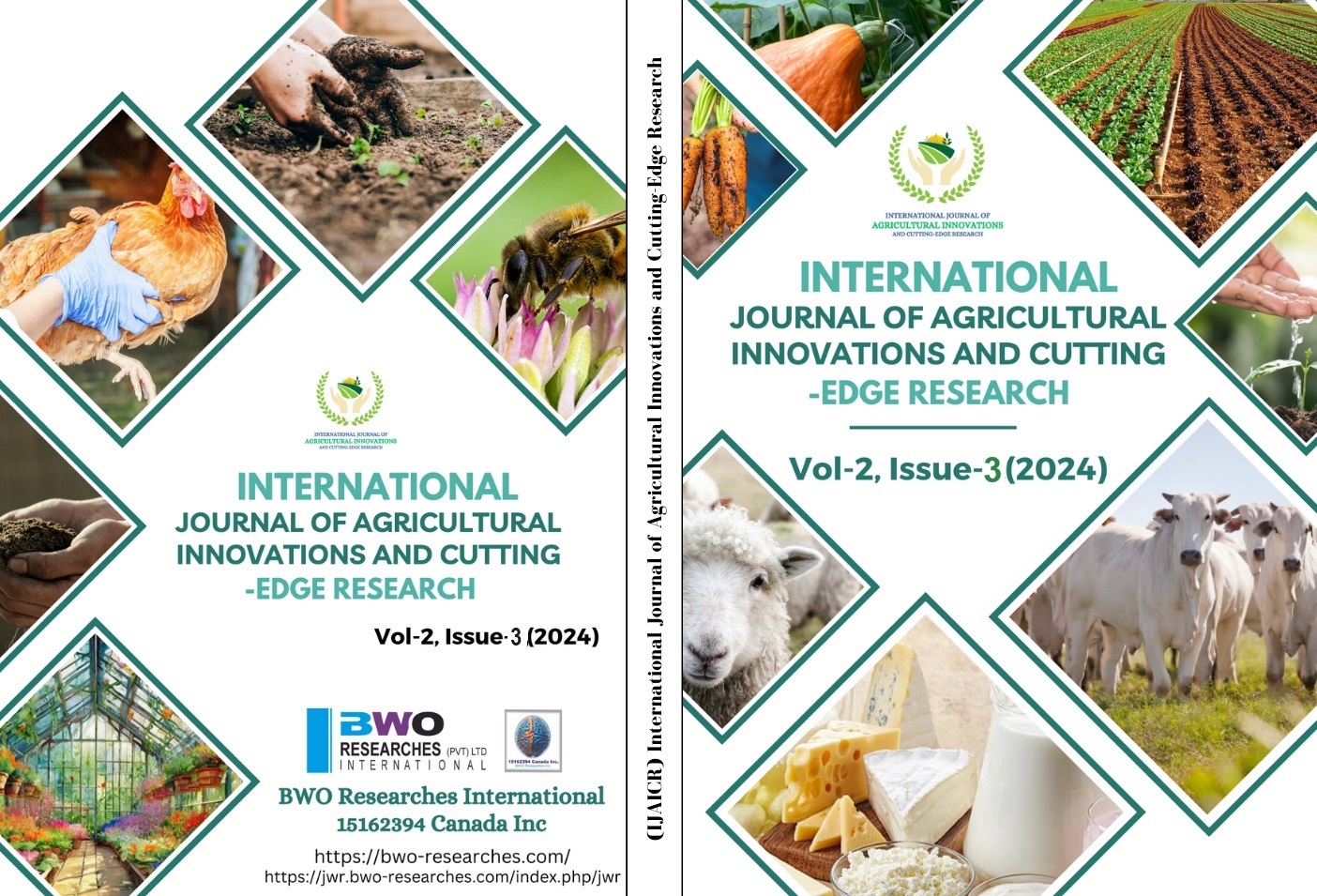Fluctuations in Biochemical and Morphological Parameters of Wheat (Triticum Aestivum L.) in Response to Fungicide
Keywords:
Wheat, Fungicide, Azoxystrobin, Biochemical , parametersAbstract
Fungicides are used to avoid fungal disease but they can affect the biochemical parameters of wheat. Fungicides are used to increase the crop yield. The study was conducted to determine the positive effects of fungicide (Azoxystrobin). The experiment was carried out at the Institute of Biological Sciences (IBS), Gomal University Dera Ismail Khan, Pakistan. Wheat (Triticum aestivum L.) seedlings were treated with different concentrations of fungicide (500mg/l, 1000mg/l and 1500mg/l) thirty days post germination. The fungicide azoxystrobin was used to determine the response of biochemical parameters of wheat to the fungicide. The concentrations of fungicide used were 500mg/l, 1000mg/l and 1500mg/l along with control group (no fungicide). The biochemical parameters studied were proteins and proteins. Results showed that total carbohydrates and protein contents increased with an increase in the concentration of fungicide. The maximum increase in carbohydrates (14%) and proteins (3.2%) were observed for an optimal fungicide concentration of 1000mg/l. However, the highest concentration of azoxystrobin (1500mg/l) caused the highest increase in leaf length (18.4cm) as compared to control (16.8cm). It was concluded from this study that optimal fungicide concentration exerts positive effects on biochemical parameters and leaf length of wheat seedlings.
References
Absattarova A, Baboyev S, Bulatova K, Karabayev M (2002) Improvement of wheat yellow rust resistance in Kazakhstan and Uzbekistan through sub-regional co-operation. Publisher: International Center for Agricultural Research in the Dry Areas (ICARDA), Aleppo, Syria
Chiu-Yueh LAN, Kuan-Hung LIN, Huang WD, Chang-Chang C (2019) Physiological effects of the fungicide azoxystrobin on wheat seedlings under extreme heat. Notulae Botanicae Horti Agrobotanici Cluj-Napoca, 47(3):683-690.
Giuliani MM, Nardella E, Gatta G, De Caro A, Quitadamo M (2010) Processing tomato cultivated under water deficit conditions: the effect of azoxystrobin. In III International Symposium on Tomato Diseases, 914:287-294
Juroszek P, von Tiedemann A (2011) Potential strategies and future requirements for plant disease management under a changing climate. Plant Pathology, 60:100–112
Nielsen SS (2010) Phenol-sulfuric acid method for total proteins. Food analysis laboratory manual, 1(3):47-53
Parvin R, Pande SV, Venkitasubramanian TA (1965) On the colorimetric biuret method of protein determination. Analytical Biochemistry, 12(2):219-229
Rademacher W (2004) Recent situation and trends in global plant bioregulator utilization. Regulation of Plant Growth & Development, 39(1), 142-151
Rangwala T, Bafna A, Maheshwari RS (2013) Harmful effects of Fungicide Treatment on Wheat (Triticum aestivum L.) Seedlings, International Research Journal of Environmental Sciences, 2(8):2319-1414
Sharma A, Kiran R (2013) Corporate Social Responsibility: Driving Forces and Challenges. International Journal of Business Research and Development, 2(1):18-27
Slawecki RA, Ryan EP and Young DH (2002) Novel fungitoxic assays for inhibition of germination associated adhesion of Botrytis cinerea and Puccinia recondita spores. Applied and Environmental Microbiology, 68: 597-601
Zhao PL, Liu CL, Huang W, Wang YZ, Yang GF (2007) Synthesis and fungicidal evaluation of novel chalcone-based strobilurin analogues. Journal of agricultural and food chemistry, 55(14):5697-5700
Ziyaev ZM, Sharma RC, Nazari K, Morgounov AI, Amanov AA, Ziyadullaev ZF, Khalikulov ZI, Alikulov SM (2011) Improving wheat stripe rust resistance in Central Asia and the Caucasus. Euphytica, 179:197–207
Downloads
Published
How to Cite
Issue
Section
License
Copyright (c) 2025 International Journal of Agriculture Innovations and Cutting-Edge Research (HEC Recognised)

This work is licensed under a Creative Commons Attribution-ShareAlike 4.0 International License.
BWO Research International
15162394 Canada Inc.,
Kitchener, ON, N2G2B3,
Canada

